Welcome to another social media case study, and another big bad month for Facebook. Privacy concerns are now having an impact on WhatsApp. Still, I have to say that some of the launches from F8 are pretty cool, particularly the simplification of Messenger and the impending arrival of Oculus Venues. To be honest it is nice to read about Facebook without hearing either algorithm or News Feed.
We’ll also briefly cover a few miscellaneous things that have gone on this month, like spring cleaning on LinkedIn and a couple of new YouTube channels.
Social media case study #1: Is video a cure-all for declining reach?
I keep playing with videos on Facebook because we are working on video content generally. It seems like the perfect solution because video is the panacea for Facebook ills, right? I don’t think so, and it isn’t just us. I looked around the WordPress space to see how things are unfolding. It made me both happy and sad to see that even the heavyweights have trouble working with the algortihm.
I heard some rumblings about this last month, but I decided to watch via Pages to Watch feature to see what was happening. Names withheld to protect the innocent. Not that it matters because everyone seems to be getting beaten down by the algorithm. I noticed one video got 284 views and 4 likes from an audience over 200,000. For me, the video ticked all of the boxes. It is an explainer on Gutenblocks, in particular how to create and edit them. Gutenberg will be out soon, so the video is both timely and informative.
I was under the impression that informative posts still received a boost from the News Feed algorithm, so did this one slip through the cracks? In my research, I saw similar numbers for video on multiple pages. Our own practical SEO video only received 3 likes and a share from 130 views.
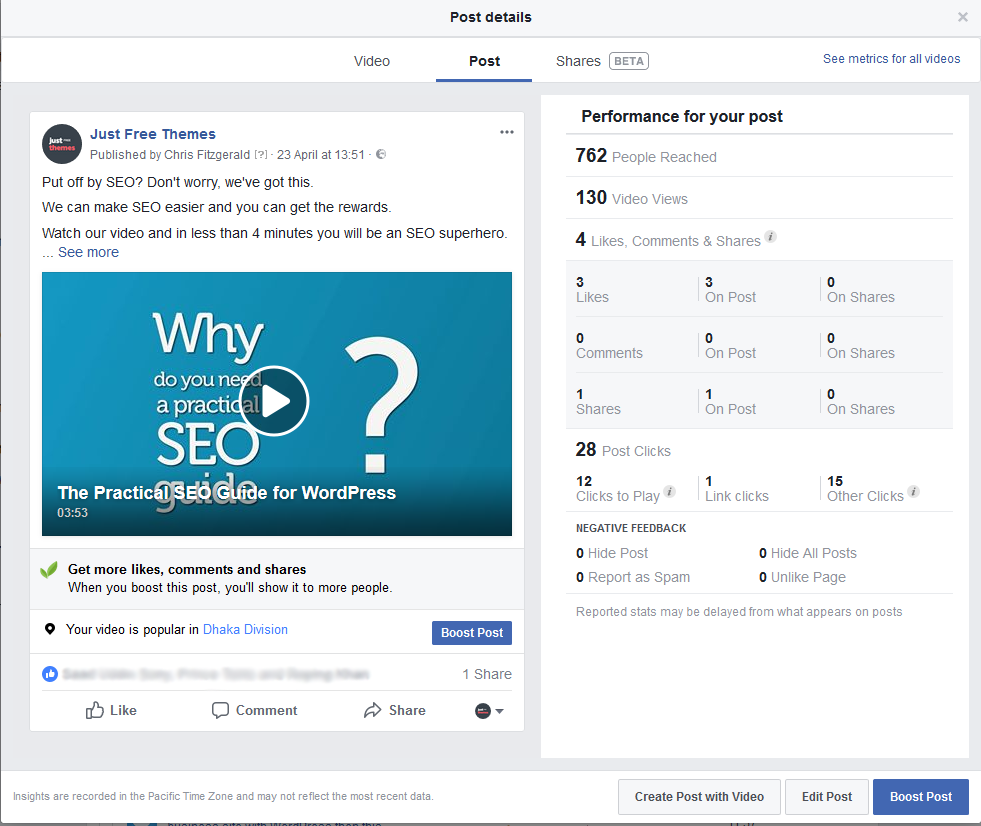
It’s weird because all of the video content mentioned above is good. For tutorials, explainers, and product announcements, quality is crucial, and all of the above videos meet the standard.
I must enjoy pain because I still decided to try another video with great animation and motion graphic design. The video is “6 Steps to Design a WordPress Site”. We got 108 views and one like from our videographer. It really gives me the idea that informative is not a powerful ranking signal, maybe I dreamt it? Without comments, our great videos can’t get any traction at all. All of the videos I have looked at ended up getting belted by the algorithm.
I could draw three broad conclusions from these experiments. Firstly, the videos are not informative enough. This is possible in some circumstances, but definitely not all. It feels more likely that the videos are not considered informative when the user sees them. I don’t think our users are interested in SEO when scrolling their News Feed.
This leads me to my second conclusion: I don’t think users really want informative videos on Facebook. We tried a few different videos over the past 8 months and they rarely performed well. We made a 7 part series on Elementor add-ons. A great subject for WordPress users and the full video got 20k views on YouTube. We sliced and diced and kept most of the videos to a minute/minute and a half. How’d they do?
Facebook says no!
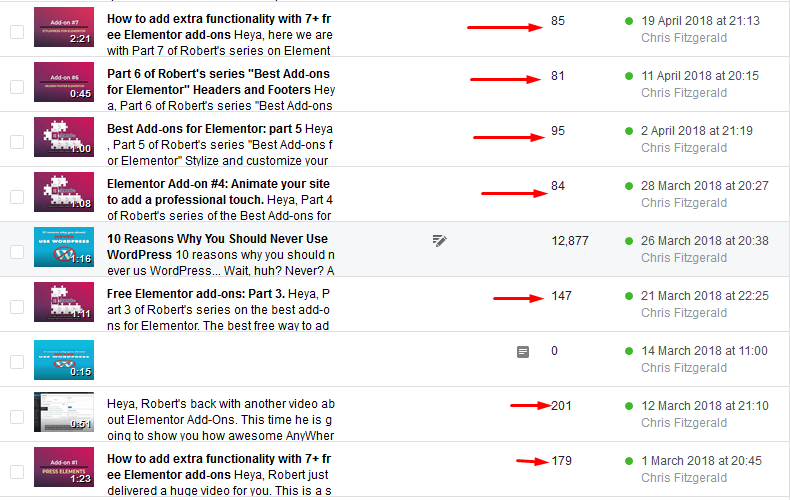
Clearly, if someone wants a tutorial or any kind of informative video then they search YouTube. A Facebook video is more serendipitous. Essentially, we need to find information that a user didn’t realize they needed to know. This X-factor is genuinely difficult.
This leads to my third conclusion: info-tainment is the only way to get eyeballs from Facebook. Info-tainment or hijinks (or a massive advertising budget).
Social media case study #2: Facebook Groups as the cure for declining reach
Are you ready to give up on Facebook yet? I’m thinking about it right now. How much time do you spend creating content for it? It feels increasingly wasteful to spend too much time on Facebook.
Despite my pessimism, we did see some cool stuff on Facebook this past month. Facebook Groups was a nice surprise for us and we will continue to push efforts in this direction. This will be a great way to leverage an incredible archive of WordPress tutorials, reviews, and guides.
We posted a cool article on the best theme for page builders to some groups. When I say we, I mean the chief. He nailed it. The simple group post in a reply to a question saw more than 550 users visit the page. Compare this with the single like we got on the regular post to our Facebook page.
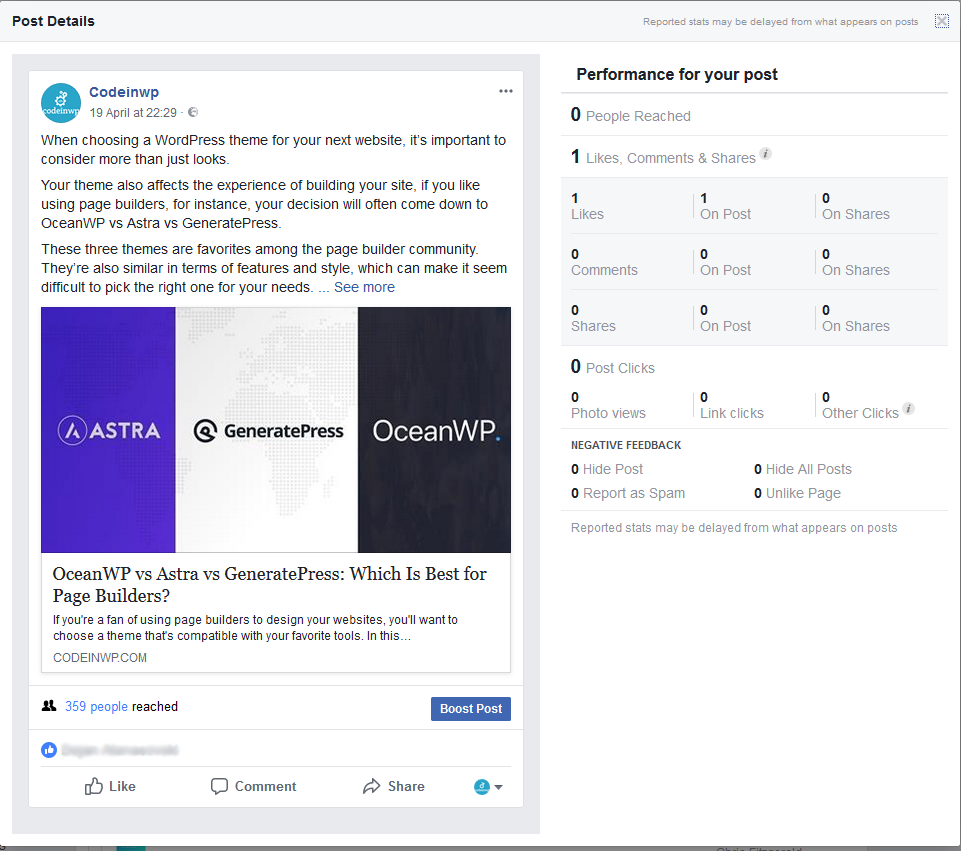
From this, we can formulate the best practices for Group posting. The best approach is to drop links in response to a question. Personally, I don’t post in or join groups with constant link posting. These groups have no value. They are just mini News Feeds and people ignore most of them.
The tactic for me going forward is to listen to groups and provide help. This won’t always be in link form. I have given advice here and there also. It is closer to advocacy and support than marketing, similar to the approach I have on Quora.
I realize now, that the only good thing about Facebook is groups. Great for research and traffic. Beyond that, it is not such a useful platform anymore. I feel like Instagram is a better place to expend effort. I saw that Mercedes are getting 15x the engagement on Instagram.
Facebook is dead, long live Instagram.
Social media case study #3: Instagram mishaps
When fooling around with Instagram this month I made some pretty concerning rookie errors. The moral is that hashtags are crucial to Insta-success.
Clearly, this is on me. I scheduled the posts at all different times because I was poking around to see what would happen. My poking led to a week’s work of content without hashtags. There might be some debate about the optimum hashtags number for engagement, but we can be sure that 0 hashtags is pretty bad for engagement and reach.
What I have been doing is posting, and then putting hashtags in the comments. The scheduling of Insta content late at night did not sync with my son’s sleeping/teething/crying schedule. So, no hashtags were posted. I found it dropped as much as 10%.
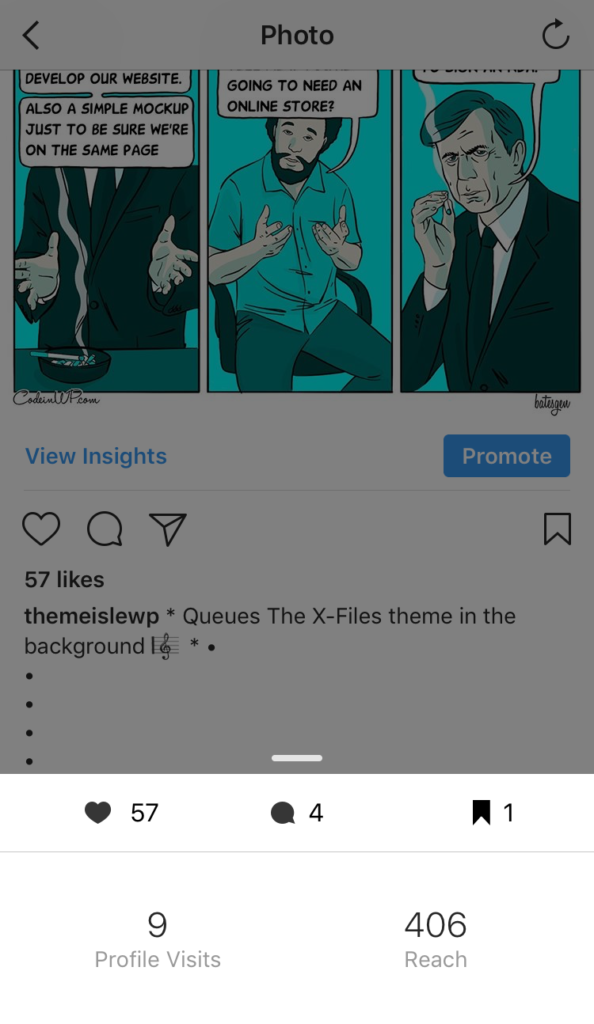
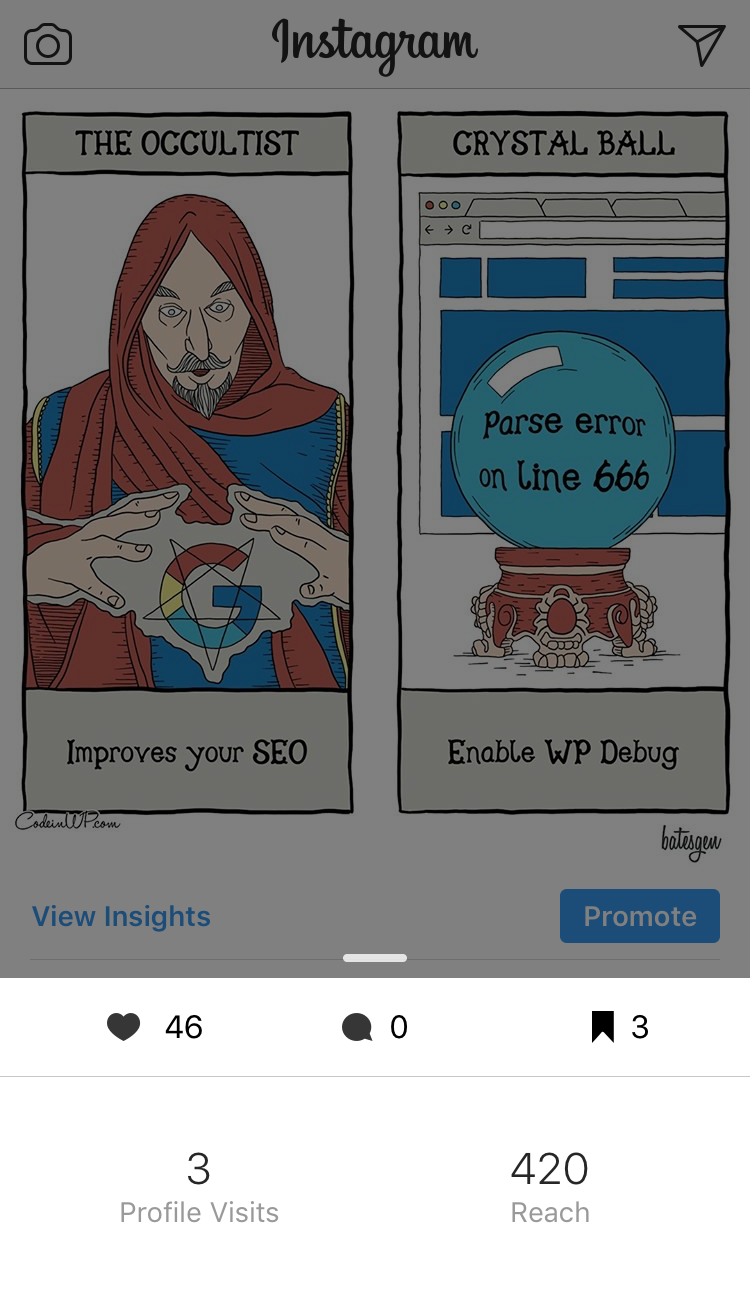
Social media case study #4: Pinterest it and they will come
I think this will also be a great way to diversify our audience. Currently on Facebook and Twitter 86% of our audience is male.
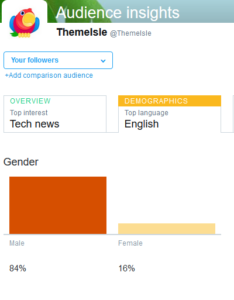
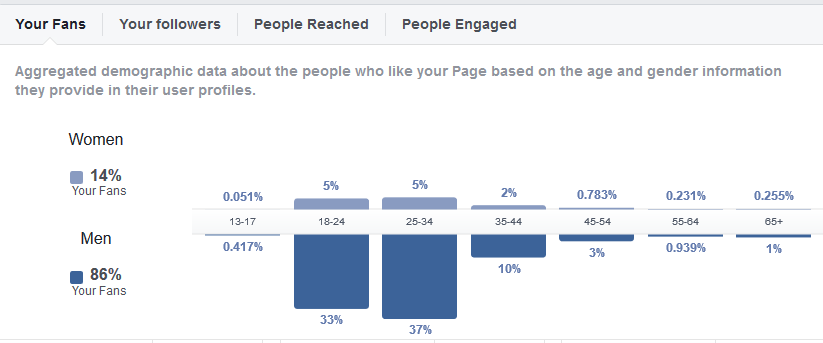
Pinterest claims 70% of their audience is female, so this makes it a great opportunity for us to diversify our audience.
I love being able to see what content on our blog gets pinned by others. The increase blog traffic post seems to be popular, but the image is from BackLinko. Luckily the archive is full of great blog posts that are focused on blogging. CodeinWP has an awesome ebook about blogging which could find a good home on Pinterest.

We have some big blog projects in the works and this could be a great place to release them.
I spent time pinning various images from our comics and creating boards for themes. So far…nothing. But these are early days, and once we start to optimize for Pinterest I am confident we can build something decent.
Final thoughts and miscellany
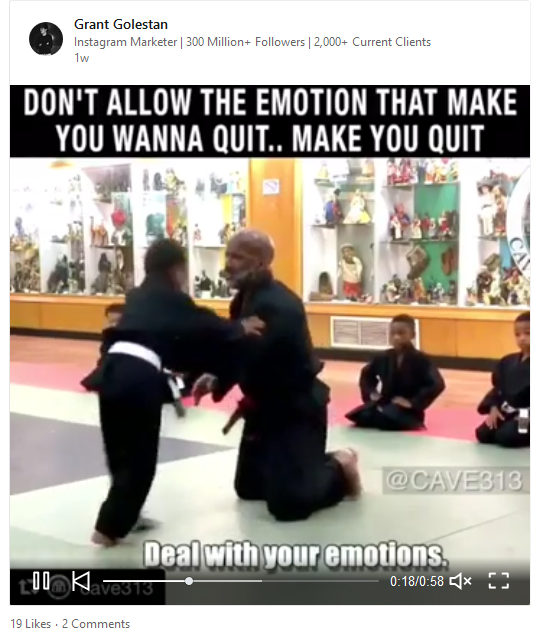
I spent some time optimizing the profiles with updated copy, and I discovered that we had an Iranian HQ for one of our side projects. Not really, but CodeinWP Iran has taken our name (could be a coincidence), and our logo (unlikely to be a coincidence).

The Revive.Social ongoing #socialmedia case study explores the power of video and alternatives to Facebook
Click To Tweet
That’s all I have for you this month, thanks for reading and I will see you in June!
The post Is It Time to Stop Using Facebook as Part of Your Social Media Marketing Strategy? Social Media Case Study #6 appeared first on Revive Social.